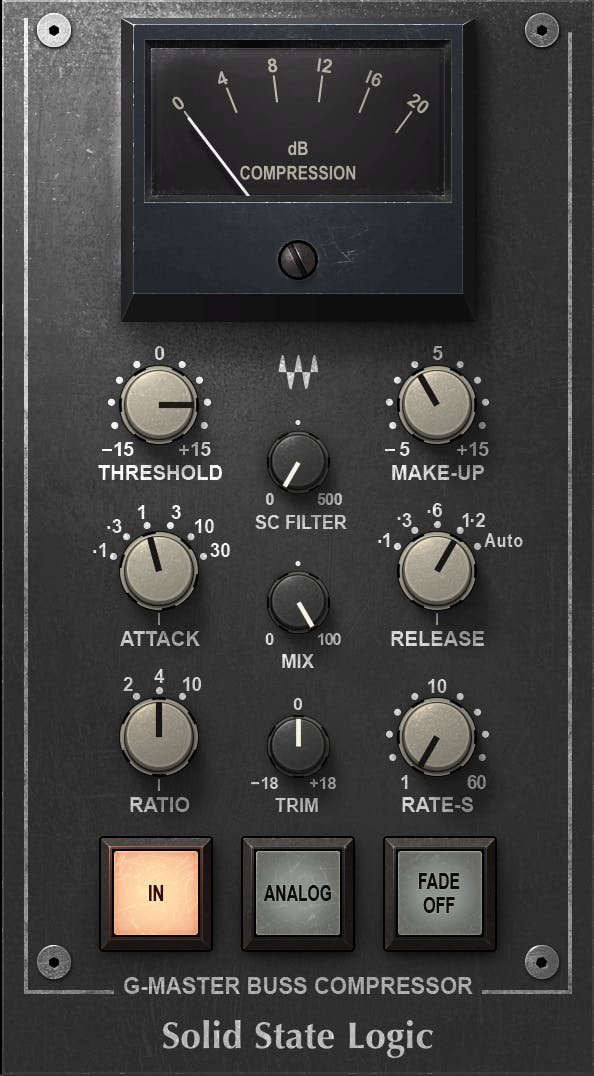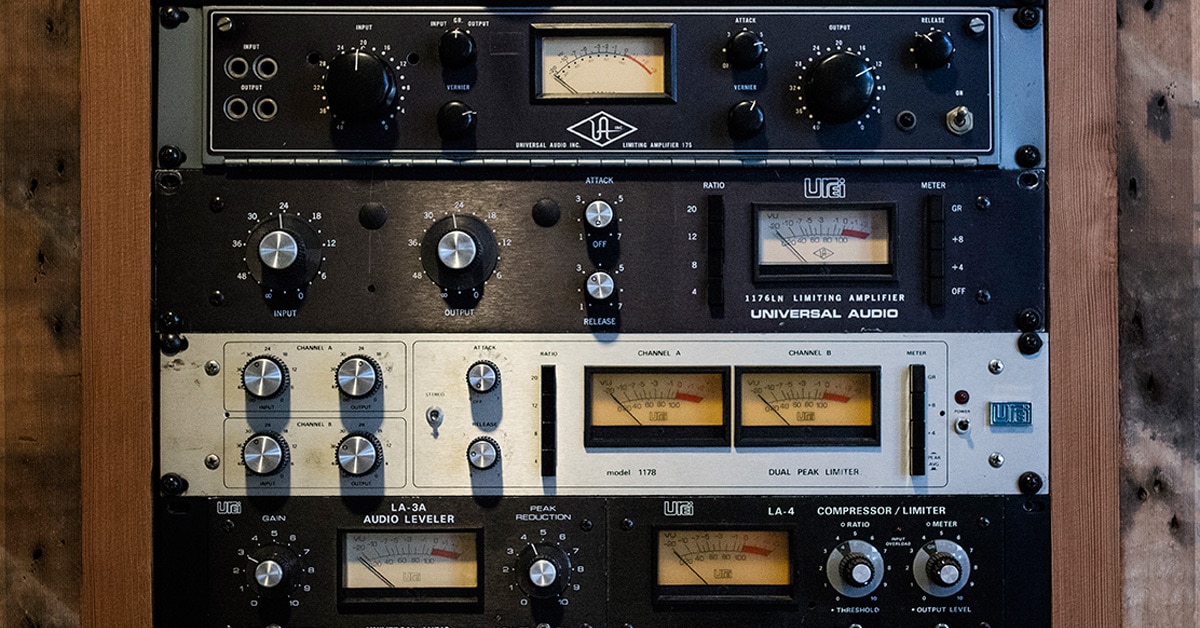For the best drum compression settings, start with a moderate compression ratio of around 4:1, a medium-fast attack, and a medium release to control peaks and enhance the sustain of the drums. Adjust the threshold until the compression is subtle and natural, aiming for around 3-6 dB of gain reduction.
Creating the right drum compression settings is crucial to achieving a balanced and punchy drum sound. Proper compression can tighten the drum sound and make it more present in the mix. By using the right compression ratio, attack, and release settings, you can enhance the impact and sustain of the drums while controlling unwanted peaks.
With the correct threshold adjustments, you can achieve a natural and dynamic drum sound that sits well in the mix, adding power and clarity to your music.

Credit: www.youtube.com
Why Compress Drums?
Compressing drums is an essential part of the mixing process. It helps to enhance dynamics, control transients, and improve the overall sound quality of the drums in a mix. By understanding the importance of compression for drums, you can achieve a more professional and polished sound.
Enhance Dynamics
When you compress drums, you can enhance the dynamics of the sound. This means that the softer parts of the drum track are brought up in volume while the louder parts are controlled. It creates a more balanced and cohesive sound, resulting in a more polished mix.
Control Transients
With compression, you can control the transients in the drum performance. This includes the initial attack of the drums, such as the sharp hit of a snare drum or kick drum. By applying compression, you can smooth out these transients, resulting in a more consistent and controlled sound across the drum tracks.
Choosing The Right Compressor
Understand Different Compressor Types
Understanding the different compressor types is crucial when it comes to compressing drums effectively. There are various compressor models, but three common ones are VCA, FET, and Optical compressors. Each type offers distinct characteristics that can significantly impact the final drum sound.
Consider Specific Drum Sound
When choosing the right compressor settings for drums, it’s essential to consider the specific drum sound you want to achieve. The ideal compressor settings may vary based on whether you’re aiming for punchy, tight, or ambient drum sound. Tailoring your compressor settings to match the desired drum sound is paramount in achieving the best results.
Setting The Threshold And Ratio
When it comes to compressing drums, finding the perfect balance between the threshold level and ratio is essential. These two parameters determine how much the compressor will act on your drum tracks, shaping their sound and adding depth and punch. In this section, we will go over how to determine the threshold level and select the appropriate ratio for your drums.
Determining The Threshold Level
Determining the threshold level is crucial in achieving the desired amount of compression on your drum tracks. The threshold is the point at which the compressor starts to reduce the volume of the audio signal. To set the threshold level correctly, follow these steps:
- Start by playing your drum tracks and listen carefully to their dynamics.
- Identify the point where the levels exceed the desired range. This is the point where you want the compressor to kick in and start reducing the volume.
- Gradually lower the threshold level until you hear the compressor acting on the drum tracks at the desired point.
Adjusting the threshold level helps you control the amount of compression applied to the drums. By setting it correctly, you can strike a balance between preserving the dynamics of the drums and adding consistency and impact.
Selecting The Appropriate Ratio
Once you have set the threshold level, it’s time to choose the appropriate ratio for your drum tracks. The ratio determines the extent to which the compressor reduces the audio signal level once it crosses the threshold. To select the right ratio for your drums, consider the following:
- Start with a lower ratio, such as 2:1, for a subtle compression effect.
- If you’re looking for more noticeable compression, increase the ratio to 4:1 or higher.
- Keep in mind that higher ratios, such as 10:1 or above, will result in a more pronounced and aggressive compression.
Experiment with different ratios to find the one that suits your drum tracks and the desired sound you want to achieve. Remember that the ratio works hand in hand with the threshold level, so make sure they are properly balanced to achieve the best results.

Credit: www.waves.com
Adjusting Attack And Release Time
When compressing drums, adjusting the attack and release time is crucial for achieving the desired sound. By manipulating these settings, you can control how quickly the compressor reacts to the incoming signal and how long it takes for the compression to release.
Controlling The Drum’s Initial Impact
To control the initial impact of the drum sound, adjust the attack time of the compressor. A shorter attack time will allow the compressor to kick in more quickly, capturing the transient and making the sound punchier. On the other hand, a longer attack time will let the initial transient pass through, resulting in a smoother sound. Experiment with different attack settings to find the perfect balance for your drums.
Allowing The Natural Decay
For preserving the natural decay of the drum sound, tweak the release time of the compressor. A shorter release time will cause the compressor to stop compressing sooner, allowing the sound to decay naturally. Conversely, a longer release time will keep the compressor engaged for a longer period, potentially altering the decay of the sound. Find the optimal release setting that maintains the natural feel of the drums.
Additional Tips For Drum Compression
When compressing drums, incorporating additional techniques can elevate the sound quality. Explore the following methods to enhance your drum compression:
Using Parallel Compression
Parallel compression involves mixing the compressed audio signal with the original uncompressed signal to achieve a balanced sound.
Applying Subtle Sidechain Compression
Implementing subtle sidechain compression helps maintain the dynamics of the drums while controlling conflicting frequencies.

Credit: www.musiciansfriend.com
Frequently Asked Questions Of How To Compress Drums Best Settings
How Can I Achieve The Best Drum Compression Settings?
To achieve the best drum compression settings, start by setting a moderate ratio of around 4:1 to 6:1 and adjust the threshold until you notice compression taking effect. Experiment with attack and release times to fine-tune the sound to your preference.
What Are The Recommended Settings For Compressing Drums?
For drum compression, use a fast attack time to catch the initial transient and a moderate release time to allow the sound to breathe. Set the ratio between 4:1 to 6:1 and adjust the threshold to control the amount of compression applied.
Why Is It Important To Compress Drums Effectively?
Compressing drums effectively helps to control the dynamics, adding punch and clarity to the sound. It can also balance the levels of different drum elements, enhance the overall mix, and create a cohesive and professional drum sound.
Should I Use Parallel Compression For Drums?
Parallel compression, also known as New York compression, can add depth and power to your drum sound by blending the compressed signal with the dry signal. Experiment with parallel compression to achieve a balance between dynamics and impact in your drum mix.
Conclusion
To achieve the best drum compression settings, follow these expert tips and techniques. Mastering the art of drum compression can greatly enhance your sound and take your music production skills to the next level. By understanding the fundamental principles and applying the right settings, you can ensure punchy, well-balanced drums that cut through the mix.
Experiment with different attack and release times, ratio and threshold settings, and don’t be afraid to rely on your ears. With practice, you’ll soon be compressing drums like a pro. Happy drumming!